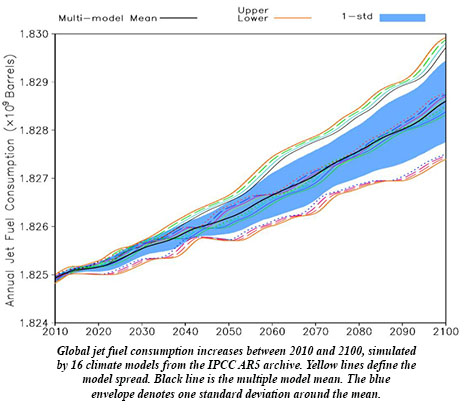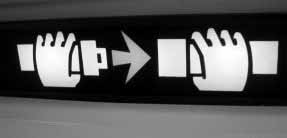COVID-19 has upended air travel for now, but if the growth in global aviation resumes, one real drag on flying is going to be increasing energy needs due to global warming. New research published in the Bulletin of the American Meteorological Society by Diandong Ren (Curtin University, Perth) et al. shows that Earth’s warming climate is going to have an often overlooked—but costly—impact on the fuel consumption of airplanes. The reason: increased viscosity, or “stickiness,” of the air.
For starters, a warming atmosphere will expand and become less dense, reducing the lift produced by aircraft wings, which means planes must increase speed and burn more fuel to maintain carrying capacity. This disadvantage counteracts any fuel advantages of flying in thinner (less resistant) air. There are other small effects on engine efficiency. In all, there is some ambiguity about the direct effect of the warming atmosphere on fuel needs at cruising altitudes. But Ren et al. point to a much larger fuel impact due to increasing atmospheric viscosity.
In a warmer world, more water can evaporate into the air. The extra molecules of water increase the drag on aircraft and that in turn will cause planes to fight harder to cruise through the air, requiring additional fuel. The increasing drag turns out to be the dominant issue—and could become very expensive.
 Ren et al. use an ensemble of 34 climate models to project that aviation fuel requirements by the end of the century could be an extra 160 million gallons per year due to viscosity, approaching an extra $1 billion per year in costs more than today in a scenario in which fossil fuel use is basically unabated.
Ren et al. use an ensemble of 34 climate models to project that aviation fuel requirements by the end of the century could be an extra 160 million gallons per year due to viscosity, approaching an extra $1 billion per year in costs more than today in a scenario in which fossil fuel use is basically unabated.
The findings take account of regional and altitudinal variations in warming for different projections based on different amounts of emissions predicted. They also take into account the most trafficked flight paths, based on recent airline data. For example, some high altitude cooling at high latitudes would mitigate the effects of drag in near-polar routes, but few jets fly these paths. Flights at mid- to low-latitudes experience the biggest increases in drag—less than 2% per century, but enough to have consequences in fuel usage. Overall, an air viscosity increase leads to about a 0.22% increase in fuel consumption by the year 2100 over 2010.
While these costs are still a small fraction of the total aviation fuel usage, they are yet another incentive for the industry to mitigate global warming through emissions reductions, as well as to pursue adaptations and efficiencies in aviation technology.
